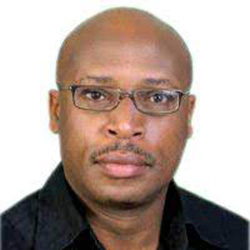With Léon Mugesera now in Rwanda to face prosecution for genocide crimes, it may serve as a reminder for other fugitives that one may not always subvert a nation’s determined pursuit for justice.


With Léon Mugesera now in Rwanda to face prosecution for genocide crimes, it may serve as a reminder for other fugitives that one may not always subvert a nation’s determined pursuit for justice.There are those like Félicien Kabuga whose whereabouts are still unknown. Rwanda and the international community remain unrelenting intheir pursuit of the fugitive for his role in Genocide against theTutsi. Kabuga has a $5 million dollar bounty for information leading to hiscapture. For him, there may be no escape, even in death. Such a scenario has a precedent, with Israel’s pursuit of Dr. Josef Mengele being one of the most famous for his heinous war crimes during the Jewish Holocaust. Nicknamed The Angel Of Death, Mengele consigned the Jews to the gas chambers and carried out unimaginable medical experiments on them inhis quest to clone a superior Aryan race. His cruelty is legendary. It is reported that victims were put into pressure chambers, tested with drugs, castrated and frozen to death.Injections with lethal germs were made, including sex change operations, removal of organs and limbs. Most of his victims died in terrible pain without anaesthetic.With the defeat of the Nazi Germans after the Second World War,Mengele escaped to Brazil and completely went out of sight. He would be pursued by the Israel, US and other governments to no avail.Though he was nearly captured in 1960, Mengele would again go underground until the big break for the pursuing governments in 1985.This was following investigations that led them to an Austrian couple in Sao Paolo, Brazil.After admitting to having sheltered Mengele, the couple pointed the investigating officers to his grave. They explained he had died 6 years earlier in 1979 after drowning in a swimming accident.Upon exhuming the body amid much international attention, what remained was establishing that the remains were indeed Mengele’s.There already existed information on Mengele’s biography, as conveyed in documents, photographs, clothing and medical records. From these an identity was able to be reconstructed from the bones after a long forensic process. For many of the aggrieved, this amounted to a trial of a war criminal to his ignominy, even in death. The laborious forensic process and results of the identification had to convince the various governments, the criminal investigators, and most importantly the survivors and the general public.With the identification there was a certain measure of closure for the survivors in their search for justice more than 30 years after the Holocaust. Psychologists say that the importance of closure may not be under-estimated as it is about a survivor’s desire for unshakable knowledge as opposed to living in uncertainty. The Rwandan fugitives may be rest assured that the quest for justice will remain relentless. And, it is not merely a national but an international obligation for the sake of the victims and survivors, and the rest of humanity.Despite his efforts to stay his deportation to Rwanda, Léon Mugesera must now live with the fact that he must be tried for his role in the Genocide against the Tutsi.




